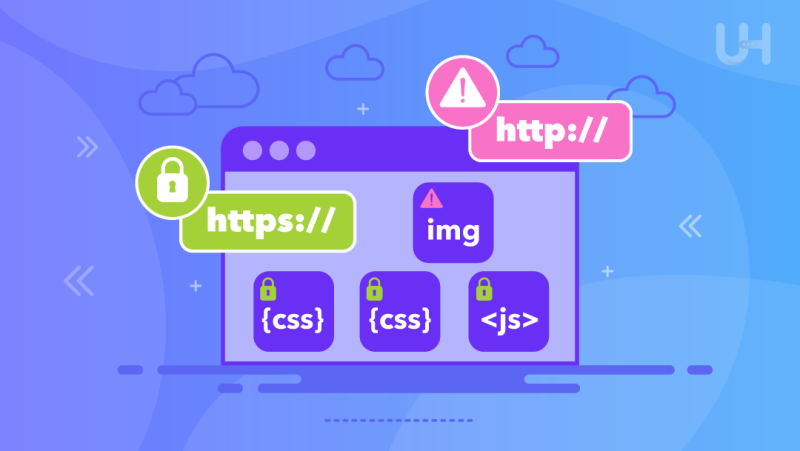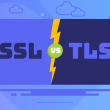We all know that ensuring the security and reliability of your website is non-negotiable. One often overlooked yet critical aspect of website security is mixed content. Imagine you visit a website only to be greeted by a warning from your browser about insecure elements on the page. This warning is not just an inconvenience; it’s a red flag indicating potential vulnerabilities that could compromise your data and user experience.
What is Mixed Content?
Mixed content refers to a web page served over a secure HTTPS connection containing resources (such as images, scripts, or stylesheets) loaded over an insecure HTTP connection. This mixing of secure and insecure elements within a single webpage poses significant security risks and compromises the integrity of the HTTPS protocol.
When a website is loaded over HTTPS, it establishes a secure, encrypted connection between the user’s browser and the web server. This encryption ensures that sensitive data, such as login credentials or personal information, remains private and protected from eavesdroppers. However, if the webpage includes resources loaded over HTTP instead of HTTPS, it creates a mixed content scenario, undermining the security of the entire page.
Types of Mixed Content
- Active Mixed Content: Active mixed content refers to resources, such as JavaScript files, plugins, or iframes, loaded over an insecure HTTP connection that has the potential to interact with the webpage’s content or modify its behaviour. This mixed content type poses a higher security risk as attackers can exploit it to perform unauthorized actions on the webpage.
- Passive Mixed Content: Passive mixed content refers to resources like images, stylesheets, or fonts loaded over HTTP that do not interact with the web page’s content or modify its behaviour. While passive mixed content still poses security risks, it does not have the same level of potential for manipulation as active mixed content.
How Mixed Content Affects Website Security and User Experience
It poses significant security risks to both website owners and visitors. From a security perspective, it creates vulnerabilities that attackers can exploit to intercept sensitive information. Moreover, browsers often display warning messages to users when encountering mixed content, alerting them to potential security issues and eroding trust in the website. This not only undermines the credibility of the website but also leads to a poor user experience, potentially driving visitors away and impacting conversion rates.
Why You Need to Pay Attention to Mixed Content?
Mixed content error isn’t just a technical inconvenience; it’s a serious threat to your website’s security, performance, and reputation. Ignoring these issues can have far-reaching consequences, impacting not only your website’s security and data protection but also its user experience and search engine rankings.
Security Implications
Mixed content introduces security vulnerabilities that attackers can exploit to compromise the confidentiality and integrity of your website’s data. By intercepting insecure resources loaded over HTTP, attackers can potentially steal sensitive information or inject malicious code into your web pages.
Vulnerabilities it Exposes Users to (e.g., Man-in-the-Middle Attacks): It opens the door to various attacks, including man-in-the-middle attacks, where an attacker intercepts communication between the user’s browser and the web server. This interception allows attackers to eavesdrop on sensitive data, manipulate website content, or even redirect users to malicious websites without their knowledge.
Secure Your Website Today!
Ready to take action and protect your website from mixed content vulnerabilities? Explore our secure WordPress hosting services at Ultahost and ensure your online presence stays safe and secure.
Impact on Website Performance and SEO
Mixed content can significantly impact the loading speed of your web pages. Browsers may delay rendering the page or display warning messages to users while waiting for insecure resources to load over HTTP. This delay frustrates users and diminishes their browsing experience, leading to higher bounce rates and lower engagement.
Effects on Search Engine Rankings: Search engines prioritize secure websites that provide a seamless user experience. Websites with mixed content can face penalization in search engine rankings, as search algorithms favour secure HTTPS connections. Consequently, ignoring mixed content issues can negatively impact your website’s visibility and organic traffic because SEO and Security always go hand in hand.
User Trust and Perception
Browsers display warning messages to users when encountering mixed content, alerting them to potential security risks. These warnings erode user trust and confidence in your website, increasing anxiety and hesitation when interacting with your content. Users are less likely to share personal information or complete transactions on websites that trigger security warnings, resulting in lost opportunities and revenue.
Potential Loss of Credibility and Conversions: Mixed content undermines the credibility of your website and business security strategies, as it signals a lack of attention to security best practices. Users may perceive your website as untrustworthy or outdated, leading to a decline in conversions and customer loyalty. Addressing mixed content issues demonstrates your commitment to data security on your server, enhancing your reputation and fostering trust among your audience.
How to Identify and Fix Mixed Content?

Addressing these issues requires a combination of effective detection methods and proactive measures to ensure the security and integrity of your website. Here’s how you can identify and resolve mixed content vulnerabilities:
Tools and Methods for Detecting Mixed Content
To identify mixed content on your website, you can use various tools and methods, including:
- Browser Developer Tools: Most modern web browsers offer built-in developer tools that allow you to inspect network requests and identify insecure resources loaded over HTTP. Look for warning messages or indicators in the browser console or network tab.
- Online Validators: Several online tools are available to scan your website for mixed content issues and provide reports. These tools can help automate the detection process and identify mixed content across your entire website.
- Security Scanning Software: Utilize security scanning software or web vulnerability scanners to perform comprehensive security audits of your shared storage server. These tools can identify mixed content vulnerabilities and other security issues and provide recommendations for remediation.
Best Practices for Resolving Mixed Content Issues
Once you’ve identified mixed content on your website, follow these best practices to resolve the issues effectively:
- Updating Resource URLs: Update the URLs of insecure resources to use secure HTTPS connections. This may involve modifying links, image sources, script references, and stylesheet URLs to ensure they are served over HTTPS. Moreover, update internal links within your website and external links to third-party resources to enforce secure connections.
- Implementing HTTPS Across the Website: Ensure your entire website is served over HTTPS to eliminate mixed content vulnerabilities. Obtain an SSL certificate from a trusted Certificate Authority (CA) and configure your web server to enforce HTTPS connections. Moreover, redirect all HTTP traffic to HTTPS using server-side redirects or HTTP Strict Transport Security (HSTS) headers to prevent insecure connections.
- Using Content Security Policy (CSP): Implement a Content Security Policy (CSP) to mitigate the risk of mixed content and other security threats, such as cross-site scripting (XSS) attacks. CSP allows you to define rules for permissible content sources and directives for handling violations. Moreover, helping to prevent the execution of unauthorized scripts and the loading of insecure resources.
- Checking and Updating Third-Party Scripts and Resources: Regularly review and update third-party scripts and resources used on your website to ensure they are served over secure HTTPS connections. Moreover, verify that third-party providers support HTTPS and provide updated URLs for their resources. Consider hosting critical scripts and resources locally to maintain control over their security and integrity.
Conclusion
In a nutshell, mixed content poses risks to your website’s security and user experience. Attackers can sneak in and mess with your site or steal sensitive information. Ignoring this can slow down your site, hurt your search engine ranking, and make visitors wary of trusting you. So, take the time to tackle mixed content. It’s not just a technical task—it’s about showing your visitors that you care about their safety and making their online experience as smooth and secure as possible.
Don’t let mixed content jeopardize your website’s security and reputation. Take the necessary steps to address mixed content issues and ensure a safer online experience for your visitors. For comprehensive protection against online threats, consider exploring our DDoS-protected VPS hosting solutions at Ultahost. With advanced security features and reliable performance, you can rest easy knowing your website is in good hands.
FAQ
How does mixed content affect website security?
Mixed content can undermine the security of your website by exposing users to potential security vulnerabilities, such as man-in-the-middle attacks or data interception.
How can I identify mixed content on my website?
You can use browser developer tools, online validators, or security scanning software to detect mixed content on your website. Moreover, these tools can help identify insecure resources loaded over HTTP and provide insights into potential security vulnerabilities.
What steps can I take to fix mixed content issues?
To fix mixed content problems, you can update resource URLs to use secure HTTPS connections. Moreover, implement HTTPS across your entire website, utilize a Content Security Policy (CSP) to mitigate security risks, and regularly review and update third-party scripts.
What’s the difference between active and passive mixed content?
Active mixed content, like JavaScript files or iframes, can interact with the webpage and pose higher security risks. Passive mixed content, such as images or stylesheets, doesn’t interact with the page and has lower security concerns.











